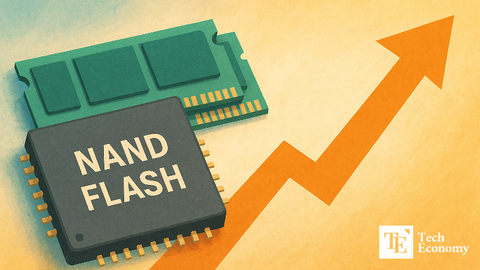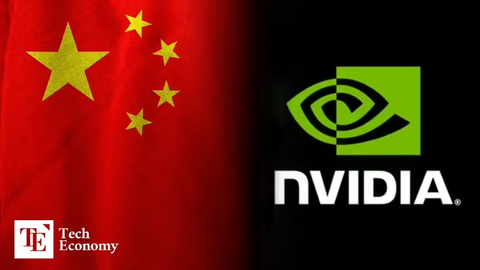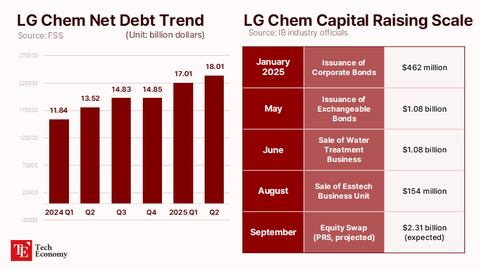Samsung's High-Stakes Hunt for a Second Harman: Inside the Tech Giant's M&A Ambitions
Input
Modified
Samsung Eyes Mega M&A Revival: A Strategic Push Beyond Harman From Robots to Telecom: Inside Samsung’s High-Stakes Hunt for Its Next Growth Engine Armed with 100 Trillion Won, Samsung Charts Bold New Course in Robotics and AI

In the aftermath of Chairman Lee Jae-yong's acquittal and Samsung Electronics' public recommitment to bold investments, the South Korean tech titan is now standing at a critical inflection point. As its once-mighty semiconductor division faces headwinds and the global tech landscape pivots toward AI, robotics, and next-gen communications, Samsung is shifting gears. With over 100 trillion won in cash reserves and rising investor pressure to secure new growth engines, Samsung is actively hunting for what industry insiders have dubbed a "second Harman"—a transformative mega-deal that can redefine its future.
Samsung's acquisition of Harman International in 2017 remains the benchmark for successful large-scale M&A in South Korea. The $8 billion acquisition gave Samsung a strong foothold in automotive electronics and premium audio, and seven years on, Harman has become a cash cow for the conglomerate. Now, with mounting urgency, the company is looking to replicate that success through strategic acquisitions in high-growth sectors like AI, robotics, Meditech, HVAC, and telecommunications. This article explores Samsung's current M&A playbook, the critical role of robotics and AI, and the industry dynamics shaping its ambitious global strategy.
From Humanoid Dreams to Corporate Reality: Samsung Bets Big on Robotics
One of the most compelling signs of Samsung's strategic pivot toward the future is its aggressive investment in robotics. At the heart of this push is its acquisition of a controlling stake in Rainbow Robotics, a Korean startup specializing in humanoid robot development. Founded in 2011 by researchers at KAIST’s Hubo Lab, Rainbow Robotics has been behind Korea’s first bipedal robot, Hubo. Samsung initially acquired a 14.7% stake in 2023 for 86.8 billion won and then exercised a call option to raise its ownership by 20.1%, incorporating the company as a subsidiary.
This investment is more than a financial transaction; it is a signal of intent. In an era where artificial intelligence is rapidly transforming industries, humanoid robots are increasingly being seen as the next frontier in automation. At CES 2025, NVIDIA CEO Jensen Huang declared that the robotics industry is nearing its “ChatGPT moment,” unveiling the company’s robot development platform "Cosmos" alongside a humanoid machine. Samsung, recognizing this shift, formed the Future Robot Promotion Group under Vice Chairman Han Jong-hee and appointed Professor Emeritus Oh Jun-ho, a founding member of Rainbow Robotics, to lead the initiative.
Samsung is now positioning itself to dominate the robotics ecosystem by combining Rainbow Robotics’ foundational technologies with its own strengths in semiconductors, displays, and connectivity. The company envisions a future where humanoid robots are integrated into households, hospitals, factories, and retail environments. As AI becomes more embedded into physical systems, Samsung's early investment in robotics could serve as the springboard to a multi-billion dollar market.
This is particularly significant given the IT industry’s increasing convergence between hardware and AI. Samsung’s robotics strategy is designed not merely for incremental gains but to establish long-term market leadership in an emerging sector. By leveraging Rainbow Robotics as a core platform, Samsung is building a diversified robot lineup and investing in the original technologies that could define the next industrial revolution.

Small Bets, Big Vision: Building a Future-Ready Ecosystem Through Targeted M&A
While the Harman acquisition remains Samsung’s most high-profile deal to date, the company has not been idle in the intervening years. Between 2021 and 2023, Samsung made equity investments in more than 260 companies, spanning a wide range of next-generation technologies. These smaller-scale transactions, though modest in individual size, collectively reveal a highly focused investment philosophy centered on AI, Meditech, and smart connectivity.
In the medical field, Samsung Medison acquired the French startup Sonio in 2023. Specializing in AI-powered ultrasound diagnostics, Sonio has carved out a niche in obstetric and gynecological imaging. The acquisition enhances Samsung’s capabilities in AI diagnostics, further integrating smart healthcare into its business model.
In the AI domain, Samsung Research led its first M&A by acquiring Oxford Semantic Technologies (OST), a British startup focused on knowledge graph technology. OST's software mimics human cognitive processes by storing and retrieving data in ways similar to human memory. Samsung had been collaborating with OST since 2018, validating its technology before executing the acquisition. This deal demonstrates Samsung’s long-term strategy to embed AI not only in software but also at the chip and device levels—what industry analysts refer to as "on-device AI."
Moreover, Samsung’s acquisition of the music streaming platform Rune via Harman illustrates its commitment to blending content and hardware. As smart devices become more immersive, audio and visual integration are critical differentiators. These investments in AI, health tech, and content services suggest Samsung is laying the foundation for a highly synergistic ecosystem where every device—from phones to home appliances—communicates seamlessly.
Despite the relatively low profile of these deals, they are crucial in Samsung's effort to discover and incubate future growth drivers. The collective impact of these transactions is akin to planting seeds in various high-potential sectors, with the intent of growing new revenue streams organically or through further consolidation.

Mega M&A on the Horizon: Is Nokia's Network Business the Next Target?
As the market speculates about Samsung’s next mega-deal, attention has turned to Nokia’s mobile network division. In August 2024, Bloomberg reported that Samsung was among the prospective buyers of the unit, which supplies base stations, wireless servers, and networking technology to telecom operators worldwide. This division accounted for 44% of Nokia’s total revenue in 2023 and is reportedly valued at around $10 billion (roughly 14 trillion won).
If completed, such an acquisition would be transformative. Samsung currently ranks fifth in global telecommunications equipment with a 6.1% market share, far behind Huawei (31.3%), Ericsson (24.3%), and Nokia (19.5%). Acquiring Nokia’s mobile network division could catapult Samsung to the No. 2 spot globally, significantly boosting its competitiveness in 5G infrastructure and beyond.
However, M&A of this magnitude is not without risk. Regulatory scrutiny, particularly in the U.S. and EU, could pose significant hurdles. Moreover, the cultural and operational integration of a telecom infrastructure giant is vastly more complex than that of a consumer audio brand like Harman. While Nokia has denied any ongoing discussions and Samsung has declined to comment, industry watchers believe the Korean tech giant is actively evaluating the opportunity.
What gives Samsung the edge is its financial muscle. As of Q3 2024, the company held over 104 trillion won in cash reserves, including 43.1 trillion won in cash and equivalents and another 60.6 trillion won in short-term financial instruments. Even after accounting for liabilities, Samsung has more than 87 trillion won in net liquidity. This gives it the freedom to pursue large-scale deals without undermining its balance sheet.
Still, not all analysts are convinced that mega-M&A is the right move at this moment. Some suggest Samsung should focus on revitalizing its core semiconductor business before making bold bets. Park Joo-geun, CEO of Leaders Index, argued that Samsung's strength lies in device manufacturing and emphasized the importance of reinforcing its technological edge in areas where it already leads.
That said, history supports Samsung’s ability to make smart, calculated M&A moves. Harman’s performance provides ample justification: since its acquisition, operating profit has ballooned from 60 billion won in 2017 to 1.3 trillion won in 2024. The cumulative profit over five years is nearly half of the acquisition cost. Much of Harman’s growth has come from increased demand for automotive electronics, premium audio, and infotainment systems supplied to global carmakers like BMW and Toyota.
Samsung now seeks to replicate this success. Whether in robotics, telecom, or meditech, the playbook is clear: find undervalued or high-potential companies in transformative sectors, integrate them into Samsung’s robust value chain, and turn them into profit engines.
Samsung Electronics is at a pivotal crossroads. With financial firepower, visionary leadership, and a proven M&A track record, it is uniquely positioned to execute another game-changing acquisition. The acquisition of Rainbow Robotics signals a new direction toward robotics and AI, while smaller deals in health tech and semantic AI lay the foundation for an integrated future ecosystem.
The market’s eyes are now on Samsung’s next big move. Will it be a telecommunications giant like Nokia, or another breakthrough in robotics or AI? One thing is certain: with Chairman Lee Jae-yong back in the picture and the Future Business Planning Group in full swing, Samsung is no longer content with playing it safe. As it seeks a “second Harman,” the company is betting big on the future—and has the means, motive, and momentum to make it happen.





















